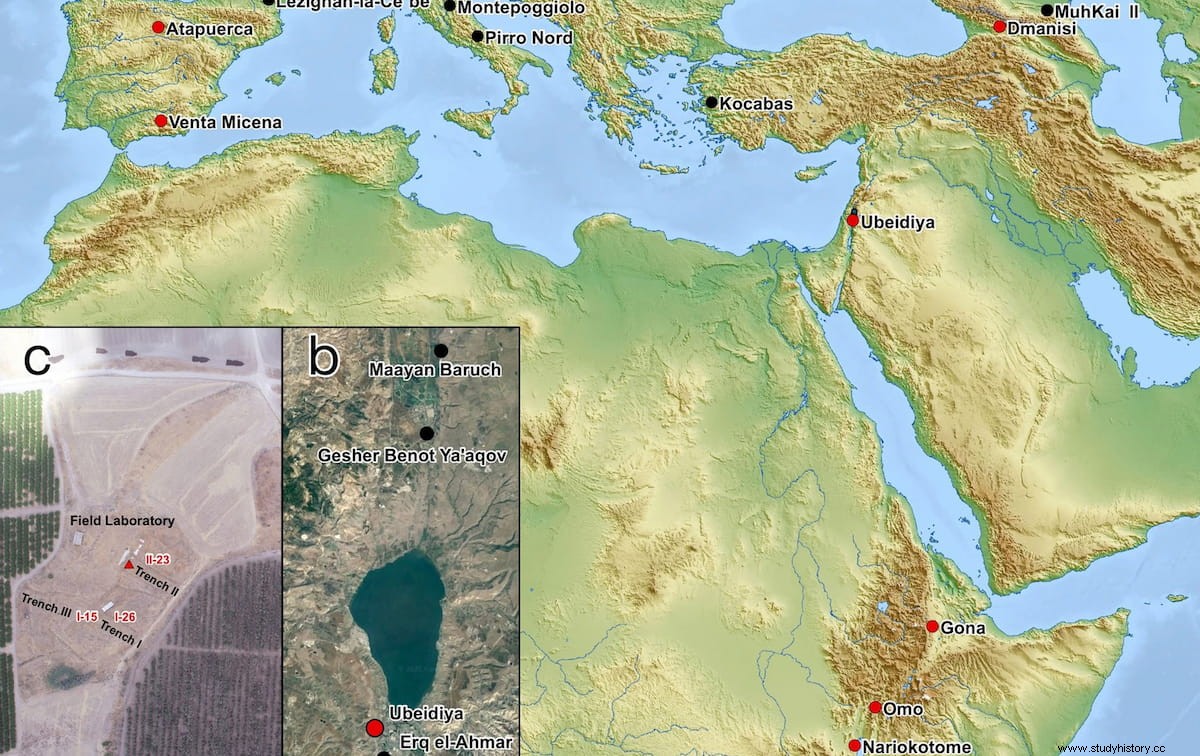A new study, led by researchers from Bar-Ilan University, Ono Academic College, the University of Tulsa and the Israel Antiquities Authority, features a 1.5-million-year-old human vertebra discovered in the Valley. of the Jordan. According to research published in the journal Scientific Reports , the ancient human migration from Africa to Eurasia was not a single event, but occurred in waves. The first wave reached what is now the Republic of Georgia, in the Caucasus, approximately 1.8 million years ago. The second is documented at 'Ubeidiya, in the Jordan Valley, south of the Sea of Galilee, approximately 1.5 million years ago.
According to fossil evidence and DNA research, human evolution began in Africa about six million years ago. About two million years ago, ancient humans—almost, but not yet in modern form—began migrating out of Africa and spreading across Eurasia. 'Ubeidiya, located in the Jordan Valley near Kibbutz Beit Zera, is one of the places where we have archaeological evidence of this dispersal.
The prehistoric site of 'Ubeidiya is important for archaeological and evolutionary studies because it is one of the few places that contain preserved remains of the first human exodus from Africa. The site is the second oldest outside of Africa and was excavated by several expeditions led by Professor M. Stekelis, Professor O. Bar-Yosef and Professor E. Tchernov between 1960 and 1999. Finds from the site include a rich and rare collection of extinct animal bones and stone artifacts. Fossil species include saber-toothed tigers, mammoths and a giant buffalo, along with animals not found in the area today, such as baboons, warthogs, hippos, giraffes and jaguars. Stone and flint objects made and used by ancient humans resemble those discovered at sites in East Africa.

Recently, Belmaker and Barzilai resumed excavations at 'Ubeidiya thanks to a grant from the US National Science Foundation. The project uses new methods of absolute dating to refine the dating of the site and study the paleoecology and paleoclimate of the region. While examining fossils from the site, now housed in the Hebrew University National Natural History Collections, Belmaker, a paleoanthropologist in the Department of Anthropology at the University of Tulsa, found a human vertebra. Initially unearthed in 1966, the bone was studied by Barash and Professor Ella Been. They identified it as a human lumbar vertebra approximately 1.5 million years old.
According to Barash, a researcher in human anatomy and evolution at Bar-Ilan University's Azrieli School of Medicine, there is debate in the literature about whether the migration was a single event or occurred in several waves. The new find from 'Ubeidiya sheds light on this question. Due to the difference in size and shape of the vertebrae from ‘Ubeidiya and those found in the Republic of Georgia, we now have unequivocal evidence for the presence of two distinct dispersal waves .
According to Barzilai, head of the Archaeological Research Department of the Israel Antiquities Authority, the 'Ubeidiya stone and flint artifacts, hand axes made of basalt, cutting tools and flint flakes, are associated with the culture early Acheulean. Previously, it was accepted that the stone tools of 'Ubeidiya and Dmanisi were associated with different cultures:the Early Acheulean in 'Ubeidiya and the Olduvayan in Dmanisi. After this new study, we concluded that it was different human species that produced the two industries .

Belmaker explained:One of the main questions about human dispersal from Africa was what ecological conditions might have facilitated dispersal. Previous theories debated whether early humans preferred an African savannah or a new, wetter forest habitat. Our new finding of different human species at Dmanisi and 'Ubeidiya is consistent with our finding that climates also differed between the two sites. ‘Ubeidiya is wetter and compatible with a Mediterranean climate, while Dmanisi is drier with a savannah habitat. This study, which shows two species each producing a different stone tool culture, is supported by the fact that each population preferred a different environment.
Our analysis shows that the 'Ubeidiya vertebra belonged to a young individual between 6 and 12 years old, who was tall for his age. If this child had reached adulthood, he would have reached a height of over 180 centimeters. This ancient human is similar in size to other large hominins found in East Africa and is different from the short hominins that lived in Georgia said Been, a paleoanthropologist at Ono Academic College's School of Health Professions and an expert on the evolution of the spine.
It appears, then, that in the period known as the Early Pleistocene we can identify at least two species of early humans outside of Africa. Each migratory wave was that of a different type of human:in appearance and form, technique and tradition of making stone tools, and ecological niche in which they lived , concluded Barash.
Fonts
Bar Ilan University | Barash, A., Belmaker, M., Bastir, M. et al . The earliest Pleistocene record of a large-bodied hominin from the Levant supports two out-of-Africa dispersal events . Sci Rep 12, 1721 (2022). doi.org/10.1038/s41598-022-05712-y
